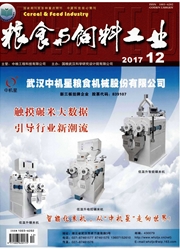

 中文摘要:
中文摘要:
探索饵料中不同鱼饲比对黄鳝肝脏、血液生化指标及抗病力的影响。结果表明,与野生黄鳝组相比,采用冰鲜鱼与膨化饲料投喂的黄鳝,其肝重指数显著高于野生黄鳝组,但试验组组间差异不显著,饵料鱼饲比对黄鳝肝重指数影响不显著;黄鳝血清谷草转氨酶和谷丙转氨酶活性未发现显著性差异,且与野生黄鳝组差异不显著。试验组黄鳝血清甘油三酯含量极显著高于野生黄鳝组,试验组组间差异不显著;随着饵料鱼饲比的降低,血清胆固醇含量有降低的趋势,T(1∶4)组显著低于T(4∶1)、T(2∶1)组,而黄鳝抗病力呈显著提高的趋势,T(1∶1)组显著高于T (4∶1)、T (2∶1)组,而后2组间无显著性差异。
 英文摘要:
英文摘要:
This test was conducted to explore the effect of different ratios of fish to feed in diet on the the liver ,blood bio‐chemical index and disease resistance in Monopterus albus .Results showed:there was a significant increasing of HIS for the tested Monopterus albus in comparison with the uncultivated ,and there were no significant differences among the tested groups ,and the effect of ratios of fish to feed on HIS was not significant .No significant differences of serum ALT/AST activi‐ties in Monopterus albus were detected in tested groups ,and there were also no significant differences between the tested groups and the control group .The content of total triglyceride in the serum of Monopterus albus in the control group was significantly lower than that in the tested groups ,but there were no significant differences among the tested groups .With the continually de‐creasing of the ratio ,there was a tendency to reduce for the content of cholesterol in the serum ,which was significantly lower in the lowest ratio T (1∶ 4) than that in the T (4 ∶ 1) and T (2∶ 1) .However ,the tendency of the disease resistance in Monopterus albus was opposite to the content of cholesterol in the serum ,and the disease resistance was significantly higher in the T(1∶1) than that in T(4∶1) and T(2∶1) .The same as T(1∶2) and T(1∶4) .
 同期刊论文项目
同期刊论文项目
 同项目期刊论文
同项目期刊论文
 期刊信息
期刊信息
